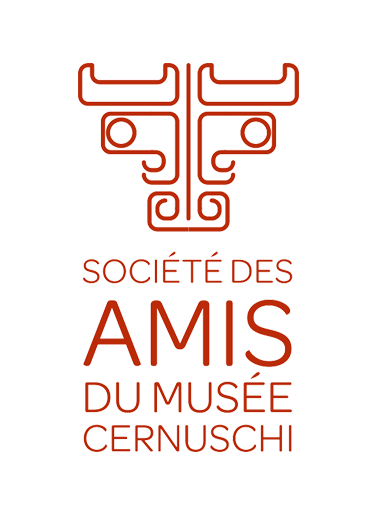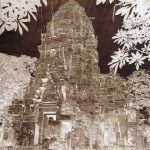Kanazawa - The Roots of a Samurai Culture
from October 2 to 14 December 2013.
House of Japanese Culture in Paris - 101Bis Quai Branly - 75015 Paris
Located on the shores of the Sea of Japan, Kanazawa was the capital of the stronghold of Kaga. This stronghold, the largest in Japan, was since the middle of the XVIe century that of the powerful Maeda clan who encouraged the flourishing of the arts. The Maeda lords encouraged the development of the tea ceremony and Noh theater, essential elements of diplomacy between warriors, and welcomed the greatest masters craftsmen of Edo (current Tokyo) and Kyoto. As Japan was going through a long period of peace, the Kanazawa samurai successfully established their own culture, distinct from that of Edo, seat of the shogun government. This exhibition presents of course armor, swords and helmets of warriors. It will, however, focus on the arts related to the tea ceremony (ceramics, calligraphy ...) and Noh theater with beautiful masks and kimonos. A vast selection of luxurious pieces of art crafts (dyed fabrics, lacquers Maki-e, goldsmiths, ceramics) will also be on display.
The Maeda, lords of the stronghold of Kaga, and their vassals
In the second half of the XVIe century, his support for Oda Nobunaga and then Toyotomi Hideyoshi - the two greatest warlords of the time - earned Maeda Toshiie (1538-1599) the attribution of domains in Kaga province. He was the first of the fourteen lords who succeeded one another at the head of the great stronghold of Kaga. It was below the castle where he resided that the city of Kanazawa developed, whose population included many vassals, as well as traders and craftsmen. With more 100 000 inhabitants at the beginning of the XVIIIe century, it was the fourth largest city after Edo, Osaka and Kyoto.
This section of the exhibition proposes to discover objects that belonged to the Maeda clan and the families of their high-ranking vassals.
Cultivation flourishes in Kaga
The tea ceremonyIt's XVIe century, while Japan was in the grip of incessant wars, that the tea ceremony began to be prized by high-ranking samurai. It was an opportunity for warriors to strengthen the bonds between them, to prepare for combat and to relax. Some Maeda lords learned this art from the famous tea masters Sen no Rikyu and Kobori Enshû. Others formed magnificent collections of ceramic bowls, kettles and other utensils for the tea ceremony. This is how Kanazawa became an important center of Chado, the way of tea. “Exceptional objects” used by the Maeda clan as well as a collection of utensils brought together by their vassal families are presented here alongside objects for tea ceremonies given in honor of important guests. Finally, an intimate tea room is reconstituted where utensils in the "stripped" style are exposed. wabi.
The world of noh
Noh, a theatrical form created at the end of the XIVe century, developed under the protection of shoguns and high-ranking warriors. Purified to the extreme, this art combines song, dance and music. Maeda Toshiie, first lord of Kaga, performed in person on the Noh stage, under the influence of the powerful Toyotomi Hideyoshi. His descendants were also great lovers of this art. They learned Noh from an early age, hired amateur actors among the merchants and artisans of Kanazawa, organized performances for official ceremonies ... An essential element of diplomacy between warriors, such as the tea ceremony, Noh became fashionable among clan members and powerful townspeople. A glimpse of the splendor that surrounds the world of Noh is given through a rich array of objects that belonged to the Maeda clan: costumes, masks, accessories ...
Kaga's crafts
The manufacture of armor required the intervention of high-level artisan techniques: goldsmith's work, lacquer and dyed textiles. For this reason, the best craftsmen from Edo and Kyoto were invited to Kaga to pass on their know-how. The dye weavers of Kaga were inspired by the technique of Yuzen imported from Kyoto to create their own colorful patterned fabrics. They quickly surpassed Kyoto in the production of excellence as attested by the kimonos and decorative rolls exhibited here. In the same way, it was Kyôto's carving craftsmen who allowed the development of the Kaga damascene, a metal working technique used especially to adorn the armor. In the middle of the XVIIe century, the kiln-firing technique was introduced in the village of Kutani, not far from the stronghold of Kaga, by potters from Arita, a city of Kyûshû renowned for its polychrome porcelain: this is the origin of colored ceramics typical of Kanazawa called ko-Kutani.
Continuing this tradition of excellence, Kanazawa remains today a region of exceptional wealth - even for Japan - in arts and crafts.




